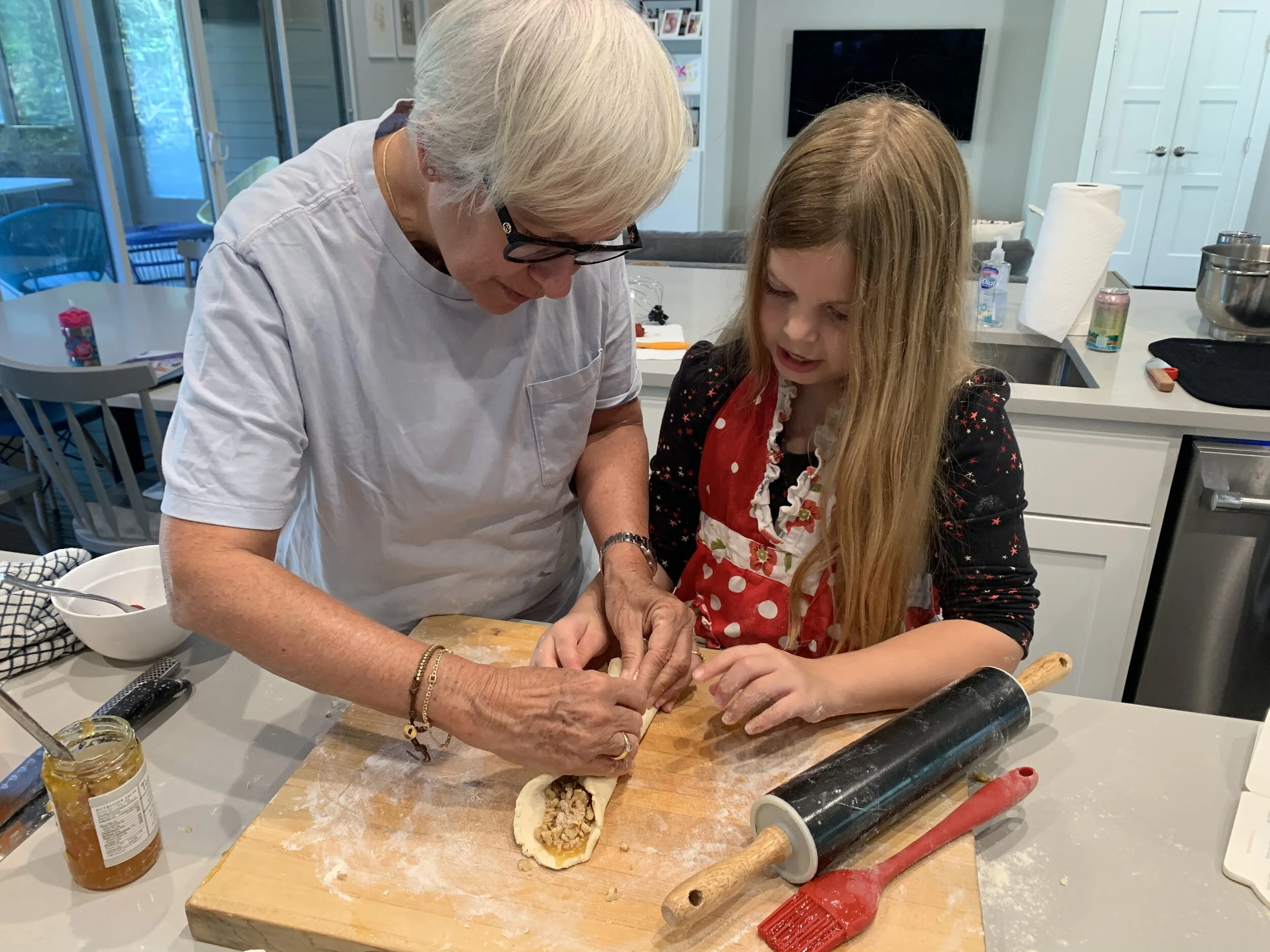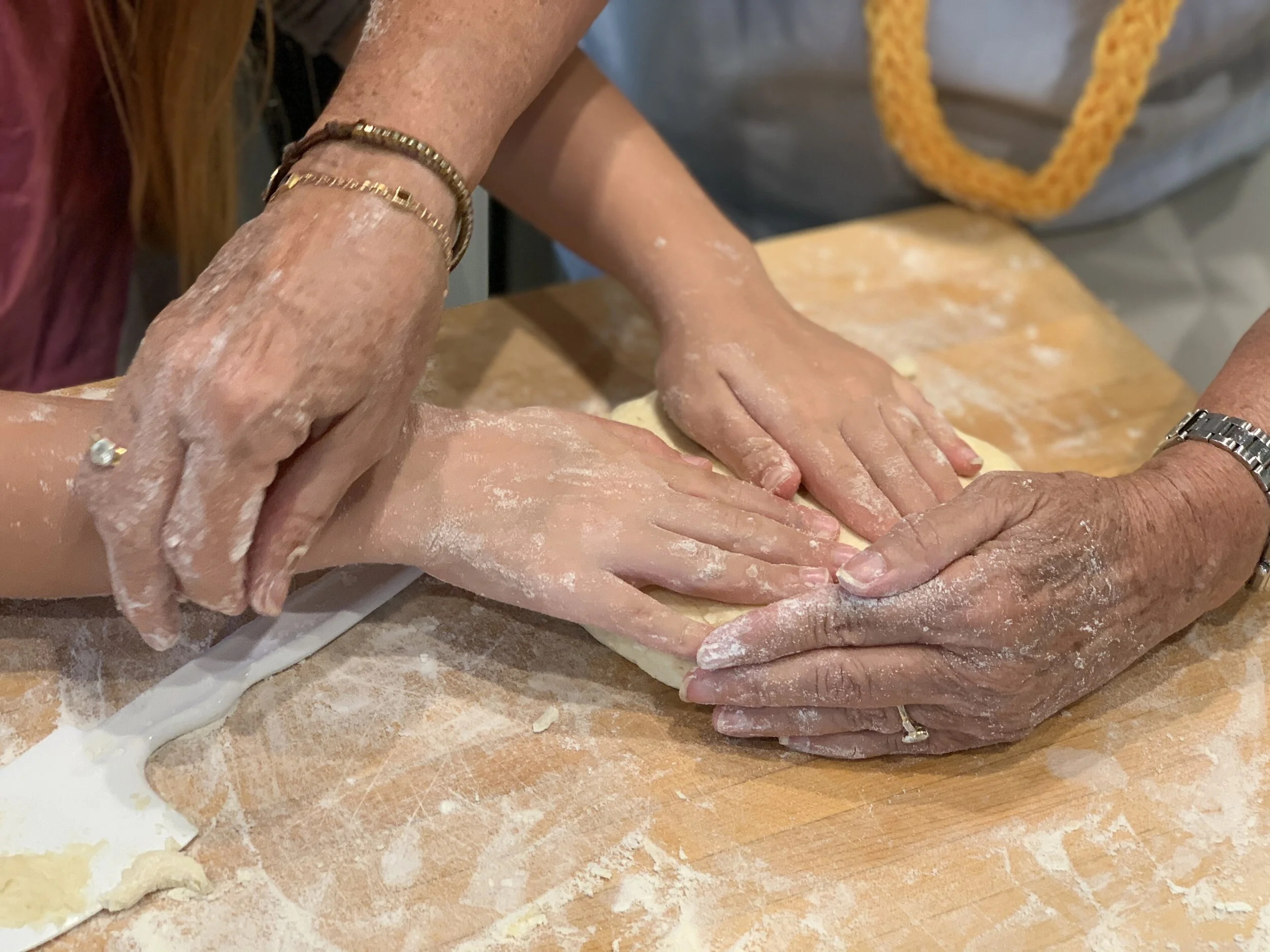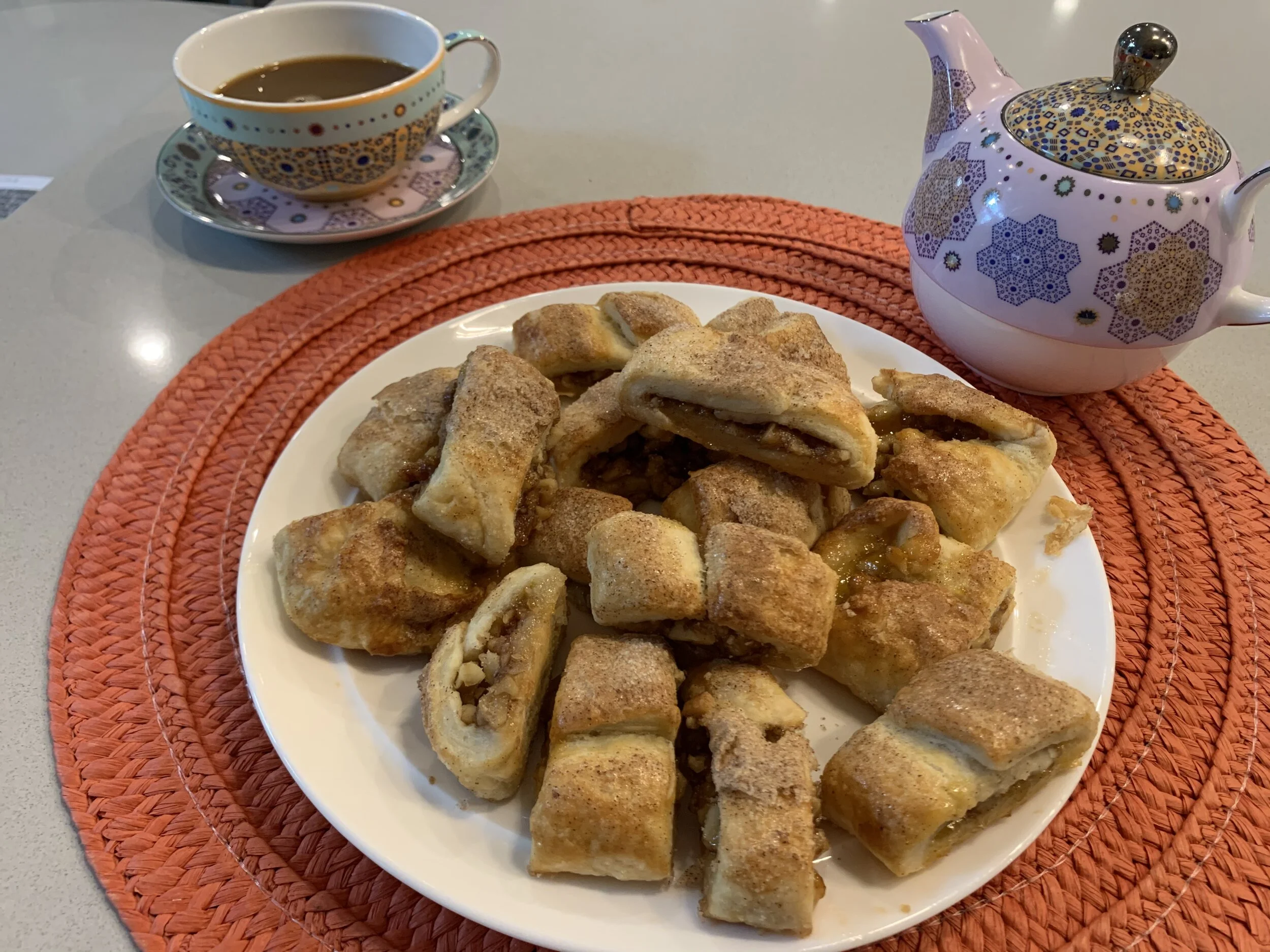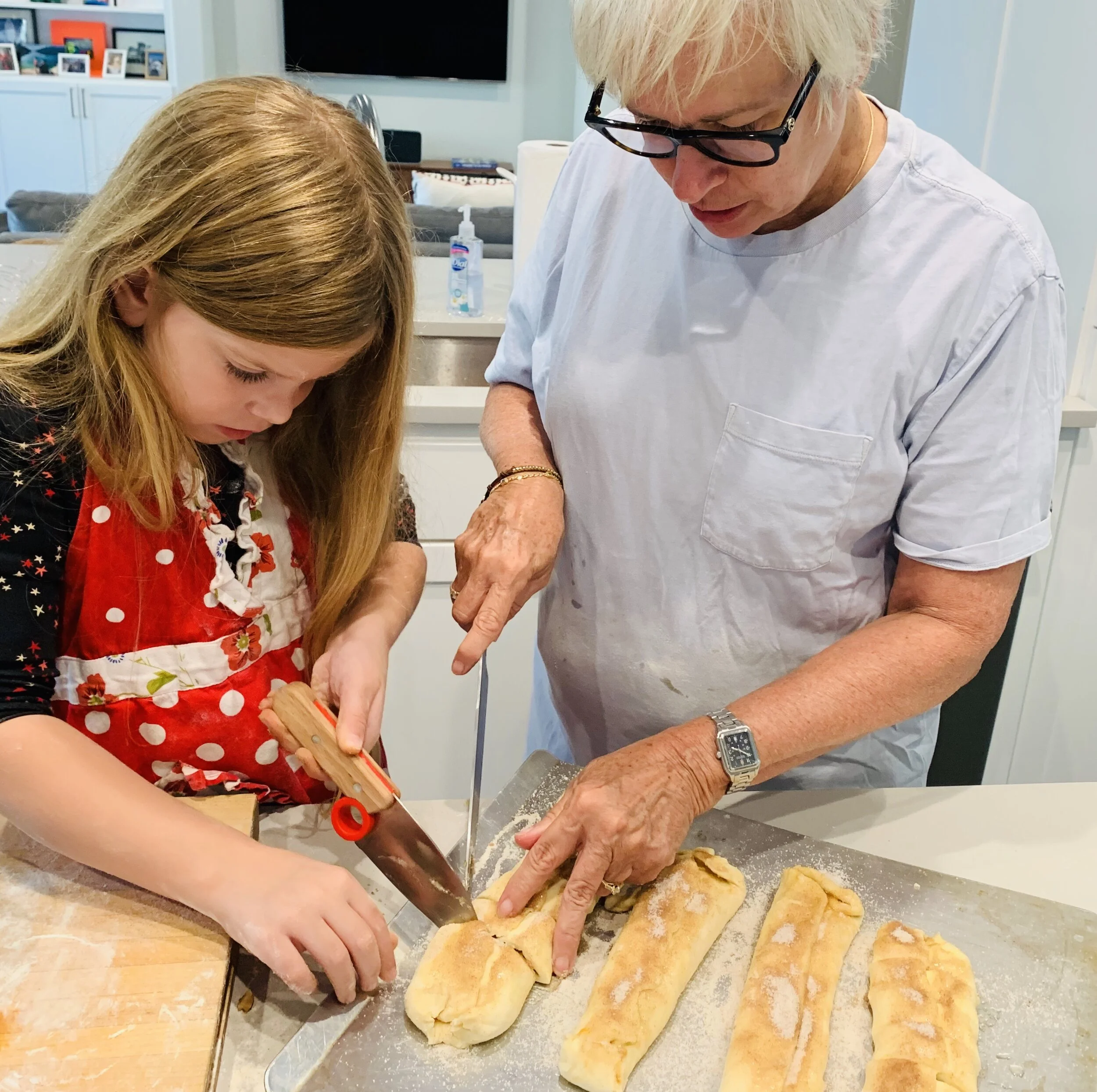Taste of the Bronx: The Original Rugelach
Next generation rugelach.
Growing up in the Bronx in the 1950s was like living in a small Polish village, set at the tempo of a Scorsese movie, shot in Yiddish. Everyone played her part.
A plump grandma in sensible shoes kibitzed with her customers, while hand-plucking kosher chickens all day. At the candy store, kids hung out slurping frosty egg creams and dunking pretzels after school while anxious numbers runners studied the New York Post. A pizza place sold slices on credit to kids from good families, a deli kept fragrant pickle barrels outdoors for impulse purchases, and a fireplug of a Polish dairyman totaled your bill with a well-worn pencil stub stationed behind his ear.
Ida, my mother, was a player. Nothing like the 50s suburban housewives I saw on TV—the ones who wore shirtwaists and high heels while vacuuming—she was more Ethel Mertz (Lucy’s sidekick) than June Cleaver. Ida was a working mother, and she had no time for decorating cupcakes.
But a few times a year, she slowed down, got out the flour and baked a simple Jewish cake or pastry. I would watch her, not so much to learn how to bake, as to lick the bowls and time the results. Mom wasn’t into sharing her kitchen knowledge. In fact, while Betty Freidan was honing her rage into The Feminine Mystique, Ida took a stand by not teaching me anything. Her dream of assimilation involved me getting out of the kitchen and having a profession. The kind where you earned lots of money, lived in Manhattan, and left meal prep to someone more qualified. I became interested in cooking in my 20s, while living in the smallest studio apartment in New York on publishing assistant wages.
Her rugelach, though, remained a warm childhood memory. So when I was writing the Totally Cookie cookbook, and she was well into her 70s, I asked her to teach me how to make them on one of her visits. She arrived with a scrap of paper that had a few faded words scribbled on it in pencil. She showed it to me, then flipped it into the trash. Then she put on her Bronx face and made these divine little Eastern European roll-ups from memory.
Hand made in Texas!
Skip ahead 35 years, and to my shock when Piper requested rugelach for one of our pastry sessions. Then I recalled that when she lived in London, there was a great grocer called Panzers in St. John’s Wood. They sold many of the Ashkenazi specialties from my childhood alongside pains au chocolat and Irish scones, bien sûr. It was a global neighborhood.
Since rugelach involves a sticky pastry dough and multiple steps, including time for the dough to rest, our in-person visit in October was the perfect time to pass along her great grandmother’s recipe. I saved it for the last day, knowing it could take hours, and wanting to stretch out the time. The next day, my husband and I would drive off to Santa Fe without knowing when we would see the grandkids again. On y va! Or, oy vay, as they say in the Bronx.
Unlike simple drop cookies, rugelach are a multi-step process that includes mixing and rolling a delicate dough. As long as I’ve been at this, I still get nervous when a dough is involved. So after consulting the recipe for about the 30th time, Piper gingerly inquired, “Grandma, have you ever made rugelach?”
“Are you kidding?” I had made these cookies exactly three times in 20 years, but I didn’t tell her that. Her question reminded me of the time when I was taking her to school in an unfamiliar car in a town that I had never visited, and she got tired of sitting in the backseat watching me adjust the mirrors. Finally she asked, “Grandma, are you sure you know how to drive?” I laughed, and got on with it.
Piper summed up rugelach-making accurately when she said, “It’s a procedure.” She loved all the hand work with the dough: rolling, folding, filling and pinching. “It looks like a weird burrito,” she noted when these doughy pillows were ready for the oven. Since they were a little drippy and uneven it was time to pass along the ultimate baking wisdom: “They may look ugly, but they will taste delicious,” I reassured her, fingers crossed. The verdict came in the next morning just as we were tearfully pulling out for New Mexico. Finicky Finn ate two for breakfast! Parfait!
Recipe note:
Before we started baking that morning, Kate, Piper’s mom, pulled me aside and broke the news that Piper doesn’t eat raisins. Quoi? We left them out, and no one was the wiser. Chocolate chips, of course, are popular alternatives, minus the jam.
This “burrito” style filling is easier to make than traditional crescents since you don’t have to handle the dough as much. I’m sure it was Ida’s preference for sheer efficiency.
Au revoir, petite-fille.
RECIPE
The Original Rugelach
Pastry
2 sticks butter, softened
1 cup full fat sour cream, natch
2 ¼ cups flour
Filling
1 cup walnuts, finely chopped
½ cup raisins (optional, but recommended)
¼ cup sugar
½ tsp cinnamon
1 cup apricot jam
1 egg white
¼ cup sugar mixed with ½ tsp cinnamon for sprinkling
Cream together butter and sour cream at high speed until light and creamy. Slowly beat in flour until the dough is smooth and elastic. Lightly knead on a floured board to form a disk. Cover with plastic wrap and chill at least 1 hour.
For the filling: In medium bowl, combine nuts, raisins, sugar and cinnamon. Stir with a fork to combine.
When ready to bake, cut dough into 4 equal parts. Place 3 pieces back in the refrigerator.
On a lightly floured board, with the palm of your hand, pat flat the first piece of dough. With a well-floured rolling pin, roll the dough to form a 5 x 10-inch rectangle. Working lengthwise, coat the center third with about ¼ cup apricot jam. Sprinkle the jam with the cinnamon nut mixture. Fold over one side lengthwise to nearly enclose. Then fold over the other side to enclose the filling. Lightly pinch the end pieces and center edges of dough to seal. Brush the top with egg white, sprinkle with cinnamon sugar, and transfer to a large, uncoated cookie sheet.
Repeat the process with each portion of dough. Then slice each across the width in ½-inch thick slices. Chill for ½ hour on the cookie sheet.
To bake: preheat oven to 400F. Bake for 10 minutes. Reduce oven heat to 375F and bake 15 to 20 minutes longer, until the pastry is golden. Transfer to racks to cool.





